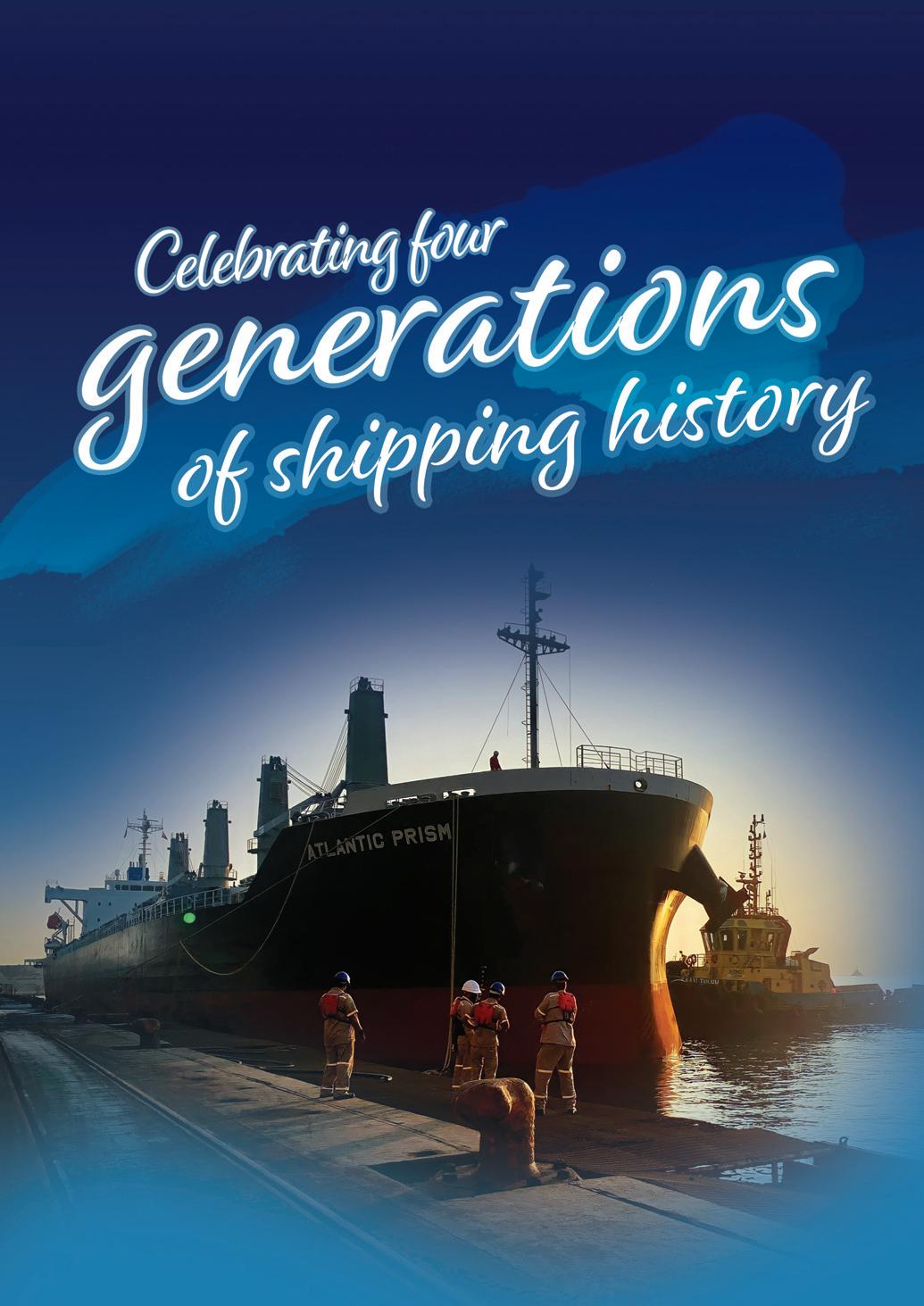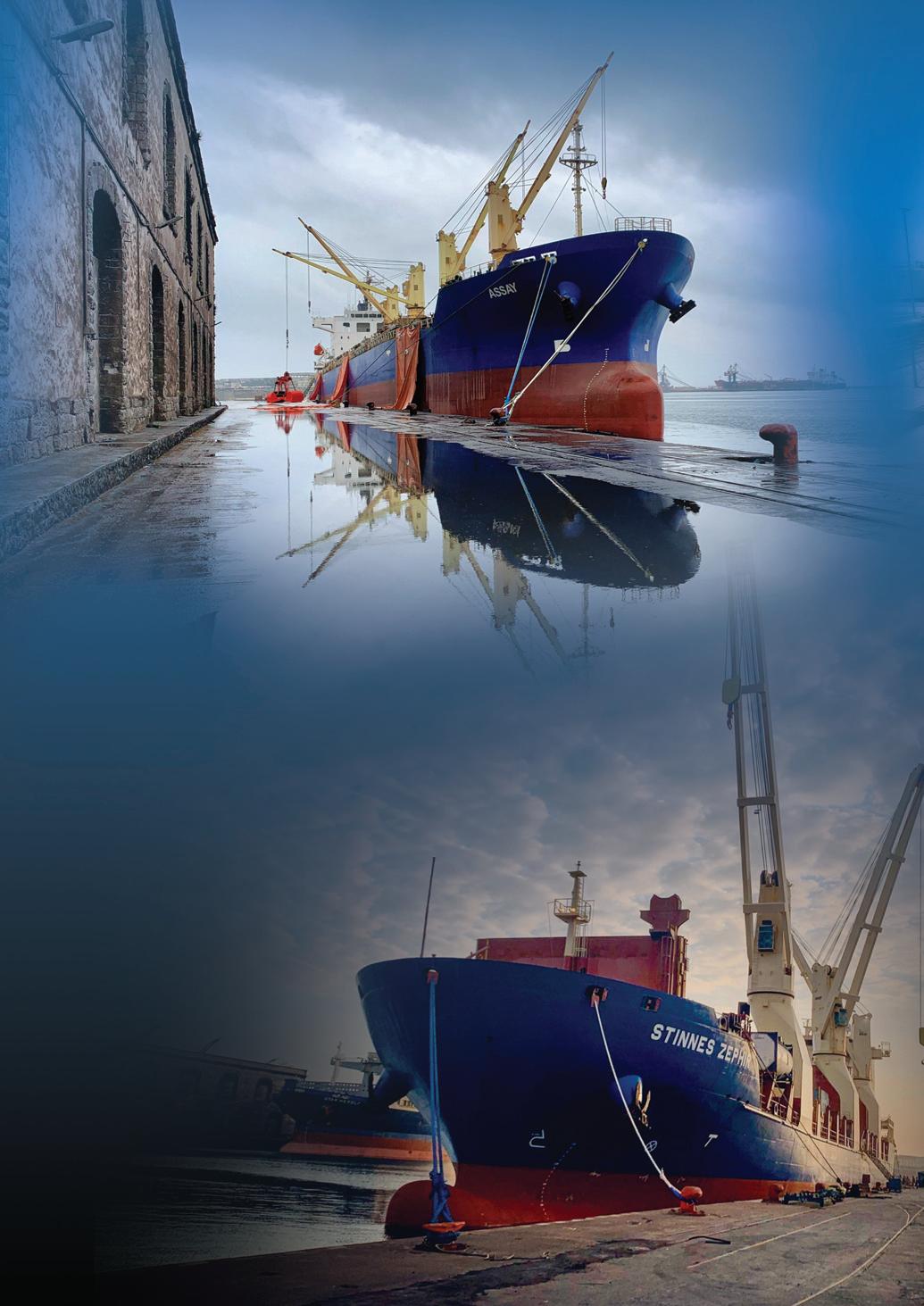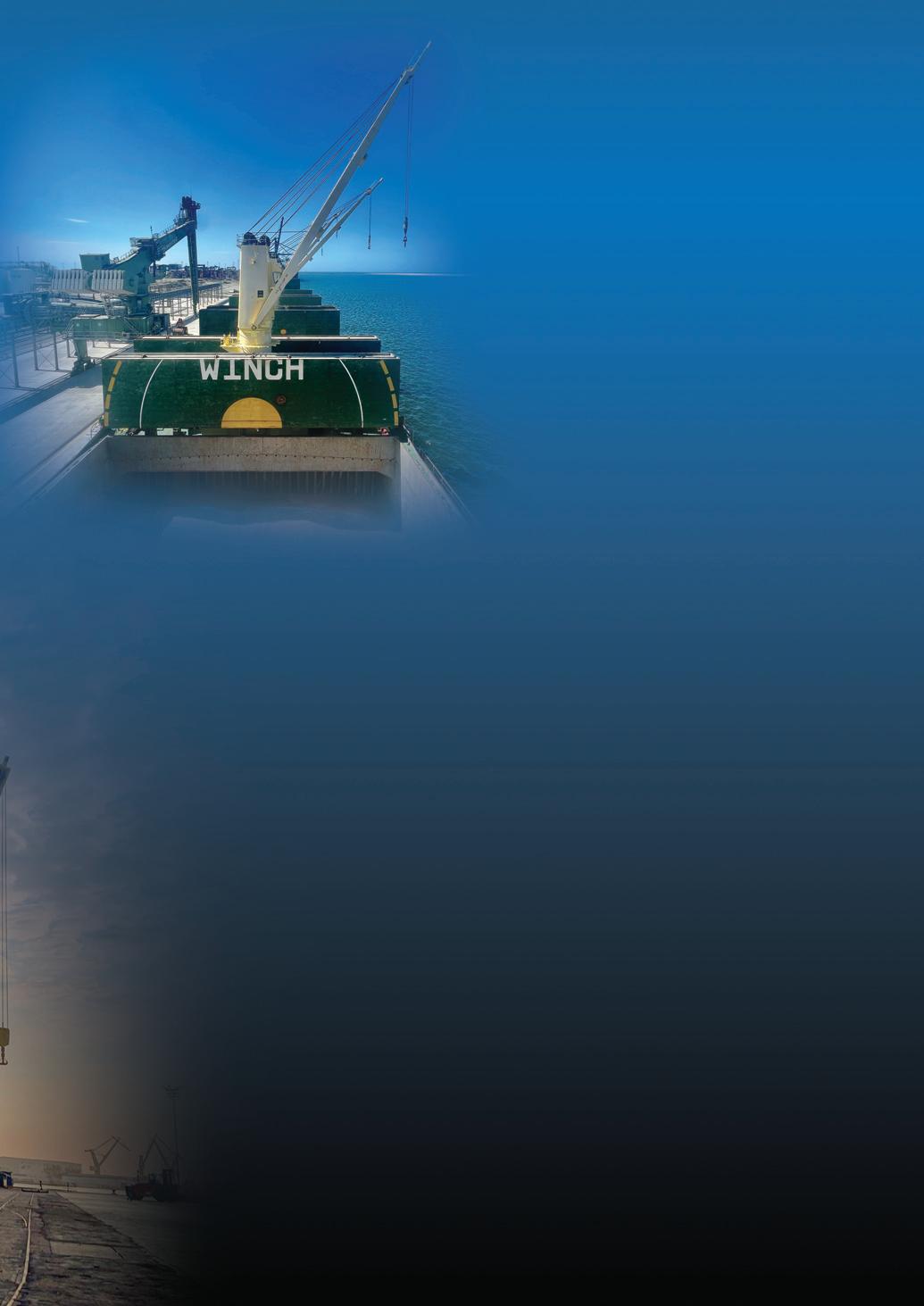OF






With a substantial footprint, a diverse service offering and almost 140 years of colourful history behind it, Maritimex, based in Mexico, is perfectly positioned to solve any client’s most difficult and demanding shipping challenges and requirements. Despite its successful history, the company isn’t sitting around on its haunches. Director Cristian Eversbusch spoke to Richard Hagan about how Maritimex contin ues its reputation for innovation, comprehensive service delivery, and flexibility.
Maritimex is one of the most impor tant shipping agencies in Mexico, with more coverage than any of its competitors.
The company maintains offices in all of Mexico’s biggest ports, 16 of which are wholly operated by the company itself while the remainder are operated by sub-agents due to low or seasonal cargo movement.
An impressive head office located in Mexico City boasts six floors hosting all of the company’s most important functions, as well as acting as a sort of repository for the company’s fascinating historical memorabilia.
Altogether, over 280 staff fall under the Maritimex umbrella, including the shipping agency itself, as well as the company’s logis tics operations, land transportation and of course the administrative side.
A robust service offering Maritimex delivers an impressively diverse service offering. Foremostly, it is the oldest shipping agency in Mexico, where it delivers port and maritime transport services in the Mexican Republic.
The company offers all of the services one would expect of a large shipping agency, including sea transportation and agent consignee services. But it goes far beyond
that, with a vast list of services on offer ranging from handling and dispatch of cruise ships, to towing, stevedoring, ship chartering, logistics and goods distribu tion services, storage, crew management and repatriation, terminal operation part nerships, fuel supply services, and project and heavy load handling services.
Surprisingly, the company’s services are also diversified into the grain industry via a 100,000 metric ton grain silo in which Maritimex has a partnership that dates back to 2018.

Maritimex has a further partnership agreement for a large container yard in the bustling Manzanillo port where con tainers are stored, stripped and loaded.
Clients’ road transport needs are also catered for with Maritimex’s inland trucking division that is specifically set up to move a huge variety of cargo by both truck and train.
Maritimex operates four vessels: a Baby Capesize container ship, a Panamax and an 11,000-ton mini bulker make up its vet eran fleet. Those three were recently bol stered by the arrival of a new Handymax.
Altogether, this fleet allows Maritimex to transport four million tons of cargo per
year; nearly all of it on coastal traffic routes in Mexico, with occasional international trips across to the USA.
All of Maritimex’s vessels are Mexican flagged and, by law, crewed by Mexicanborn nationals. In addition to its own fleet, the company also renders launch services via a pilot boat that it operates.
One of Maritimex’s most innovative ser vice offerings is its unique, niche railway car shipping service. It’s exactly as fasci nating as it sounds.
Via a subsidiary called CG Railway, the company owns and operates two highly bespoke, highly unusual transport vessels.
“It’s two vessels fitted with railway lines,” said Director Cristian Eversbusch. “They’re designed to carry rail cars. They are the only vessels of their kind and they only take rail cars. Both ships have been run ning since 2000, for 22 years now. It’s an extremely unique service.”
The vessels are each able to carry 60 rai l cars and both do about eight port calls per month, running between Quetzalcóatl, Mexico, and Mobile, Alabama in the US. The trip between ports takes about four days, and once in port, the vessels can be loaded or unloaded within an impressive eight hours.
The key question then becomes: what is the reason that the company carries rail cars rather than just the containers or cargo that is on the cars, as per traditional methods? Mr Eversbusch had a clear answer: “The administration involved in transporting a load on the same rail car is simpler, the overall shipping time is reduced, and cargo damage is substantially decreased due to far less handling of the cargo.”
Perhaps the most interesting technical aspect of CG Railway’s operation is the way in which the ships are loaded. Each ship docks in a specially-equipped terminal. A sort of floating railway bridge is the inter face that then allows the railway lines on the ship to make a connection with the railway lines on the dock. Once everything is con nected, the rail cars are simply rolled onto the ship and eight hours later, the ship is on its way to its destination.
After 22 years of successful operation, the company’s two existing rail transport ships are being replaced by two new ves sels, each boasting more than double the capacity. The new vessels ‘Maja’ and ‘Cherokee’ can each accommodate up to 140 rail cars across two decks, a substan tial expansion over the outgoing ships which each had a single deck and a 60 car capacity.
Maritimex was established in 1885. The company began with a single, humble office in the port of Veracruz where it primarily acted as general and port agents for

the Hamburg America Line. That line is also still around today, operating as Hapag-Lloyd.
That particular business relationship grew so strong that Maritimex retained it for 106 years. It eventually ended when HapagLloyd purchased Mexico’s TMM, effectively insourcing the services that Maritimex had been providing to date.


Nonetheless, Mr Eversbusch was posi tive in his recollection of the relationship with Hapag-Lloyd and what it had meant for the company: “The relationship HapagLloyd enjoyed with us is the longest rep resentation relationship they’ve ever had anywhere,” he recalled. “We kept it in our family for 106 years; four generations of us were part of that relationship, actively working as agents for them.”
Maritimex is a family-run business that is now in its fourth generation of man agement. Today, Mr Eversbusch’s father, Ricardo Eversbusch, is the chairman of the board. The fifth generation, mean while, is being groomed to take over the business in future.
The business was originally started by Mr Eversbusch’s grandfather who had come to Mexico from Germany in the late 19th century. Naturally, having survived
two World Wars and a national revolution, the company has a colourful history. Mr Eversbusch was keen to share two particu larly interesting stories about his grandfa ther who once became an unexpected and unlikely political hero.
“In 1911, the Mexican Revolution was underway and things were getting really tough for everyone. President Porfirio Diaz had been pressured to resign and was forced into exile. My great grandfa ther found a passage for him on the lines we operated. He received the president in the Port of Veracruz and sent the presi dent on his way to France.”
The second story took place in 1914 at the height of the Revolutionary period. “My great grandfather was living in Tampico at the time,” Mr Eversbusch recounted.
“When the revolutionary forces eventu ally approached Tampico, my great grand father negotiated with one of the revolutionary leaders to give the foreigners at the port (mainly engineers working at the large nearby international oil industry facili ties), time to evacuate. This was agreed to, and the foreigners left on various vessels. My grandfather was widely commended by the foreign embassies concerned, for his actions that saved so many lives.”
With the company’s 140th anniversary now on the horizon, Mr Eversbusch com mented on the company’s plans for that milestone and the coming years: “We’ll definitely celebrate the 140 year anniver sary, but the one we’re really looking for ward to is reaching the 150 year mark. In the meantime, we’re working on intro ducing the fifth generation of the family to the business by ensuring that they get work experience in shipping companies outside of Mexico.”
“The company is looking to expand our coastal shipping services in Mexico as well as our warehousing, especially our grain capacity,” he continued. “We want to enlarge our intermodal container yard and in general, we want to serve more customers in Mexico.”
In closing, Mr Eversbusch drew on his family’s successful history as a message for potential future customers.
“We want the world to know that we’re in Mexico and we’ve been working here successfully for four generations. We are experts, with the footprint and the infras tructure to meet all of your shipping and logistics needs. We are here and we’re the perfect partner for you.” n
